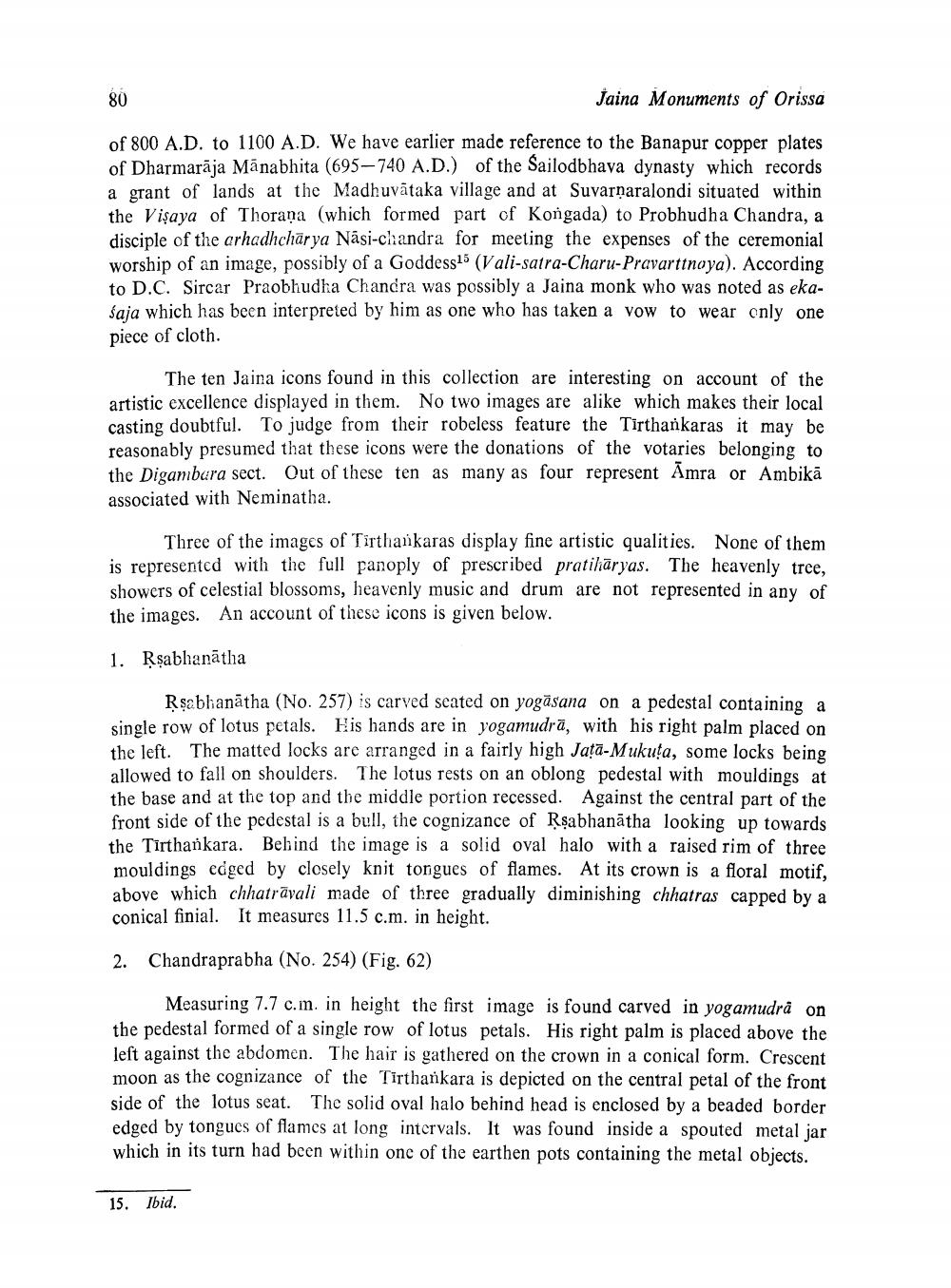________________
Jaina Monuments of Orissa
of 800 A.D. to 1100 A.D. We have earlier made reference to the Banapur copper plates of Dharmarāja Mānabhita (695-740 A.D.) of the Sailodbhava dynasty which records a grant of lands at the Madhuvātaka village and at Suvarnaralondi situated within the Vişaya of Thorana (which formed part of Kongada) to Probhudha Chandra, a disciple of the arhadhcharya Nāsi-chandra for meeting the expenses of the ceremonial worship of an image, possibly of a Goddess16 (V ali-satra-Charu-Pravartinoya). According to D.C. Sircar Praobhudha Chandra was possibly a Jaina monk who was noted as ekaśaja which has been interpreted by him as one who has taken a vow to wear only one piece of cloth.
The ten Jaina icons found in this collection are interesting on account of the artistic excellence displayed in them. No two images are alike which makes their local casting doubtful. To judge from their robeless feature the Tirtharkaras it may be reasonably presumed that these icons were the donations of the votaries belonging to the Digambara sect. Out of these ten as many as four represent Amra or Ambikā associated with Neminatha.
Three of the images of Tirthaukaras display fine artistic qualities. None of them is represented with the full panoply of prescribed pratihāryas. The heavenly tree, showers of celestial blossoms, heavenly music and drum are not represented in any of the images. An account of these icons is given below.
1. Rşabhanātha
Rşabhanātha (No. 257) is carved seated on yogäsana on a pedestal containing a single row of lotus petals. His hands are in yogamudrā, with his right palm placed on the left. The matted locks are arranged in a fairly high Jatā-Mukuta, some locks being allowed to fall on shoulders. The lotus rests on an oblong pedestal with mouldings at the base and at the top and the middle portion recessed. Against the central part of the front side of the pedestal is a bull, the cognizance of Rşabhanātha looking up towards the Tirthankara. Behind the image is a solid oval halo with a raised rim of three mouldings edged by closely knit tongues of flames. At its crown is a floral motif, above which chhatrāvali made of three gradually diminishing chhatras capped by a conical finial. It measures 11.5 c.m. in height.
2. Chandraprabha (No. 254) (Fig. 62)
Measuring 7.7 c.m. in height the first image is found carved in yogamudrå on the pedestal formed of a single row of lotus petals. His right palm is placed above the left against the abdomen. The hair is gathered on the crown in a conical form. Crescent moon as the cognizance of the Tirthankara is depicted on the central petal of the front side of the lotus seat. The solid oval halo behind head is enclosed by a beaded border edged by tongues of flames at long intervals. It was found inside a spouted metal jar which in its turn had been within one of the earthen pots containing the metal objects.
15.
Ibid.




